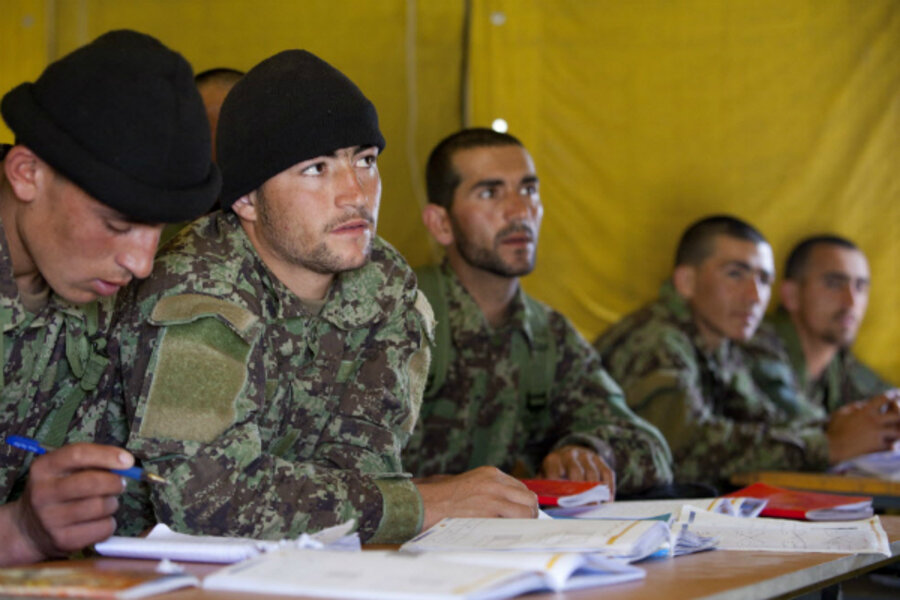It has been a cornerstone of US military policy in Afghanistan: As Afghan soldiers and police stand up, US troops can stand down.
That has been happening more slowly than US officials had hoped, with an attrition rate of some 25 percent per year within the Afghan National Army (ANA), according to a senior NATO official.
Brig. Gen. Thomas Putt, director of Afghan National Security Forces Development in Kabul, promised that NATO will meet its goals to build up the size of Afghan security forces to suitable levels by October.
Many new recruits have been attracted to the force by literacy programs sponsored by the US military. Most Afghans are illiterate, and teaching new recruits how to read “has become a real draw for the security forces as we move forward,” Putt said during a Pentagon briefing Aug. 1. “It is also, I think, a secret weapon that the insurgents can’t provide, and that’s one draw down the road that we think will pay huge dividends as we go forward.”
But the ongoing question will be how to sustain these forces long after US troops leave.
So far, very few Afghan units can operate “independently” of US advisers. This fact was brought into sharp relief with a Government Accountability Office (GAO) report released in July that charged the Pentagon with being evasive when it comes to evaluating the capabilities of Afghan security forces. It found that the “tools used to assess the performance of the [Afghan military] units have changed several times.”
Indeed, the highest level of achievement for an ANA unit had previously been “independent.” As of August 2011, that top rating was changed to “independent with advisers.” The Pentagon made these changes, the GAO charged, to make it seem as if the ANA were making more progress than it actually has. The GAO investigation further found that these changes were "partly responsible for the increase in ANSF units rated at the highest level."
Much of the costs for standing up and even maintaining the Afghan Army will require US money for years to come. The United States is covering most of the costs of the ANA and, with an annual budget of $4.1 billion, “the Afghan government has limited ability to financially support its security forces,” the GAO reports.
The looming threat is that after US troops leave, ANA fighters might have to take their US-provided training and find work elsewhere if they want a steady paycheck. This, in turn, raises the specter of private militias.
The nominee to be the next US ambassador to Afghanistan, James Cunningham, addressed the threat in testimony before the House Armed Services Committee on July 31. “I think the talk of rearming and of reforming of militias is overstated,” he said. “But the temptation is there, and the uncertainty about how various groups will advance their interests in the future is very much on the table.”





